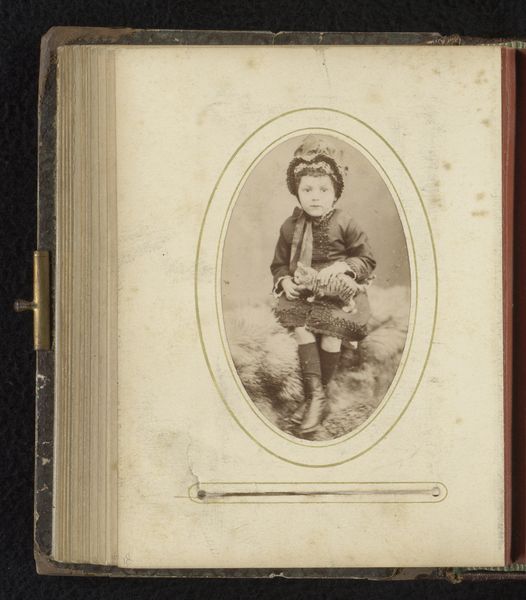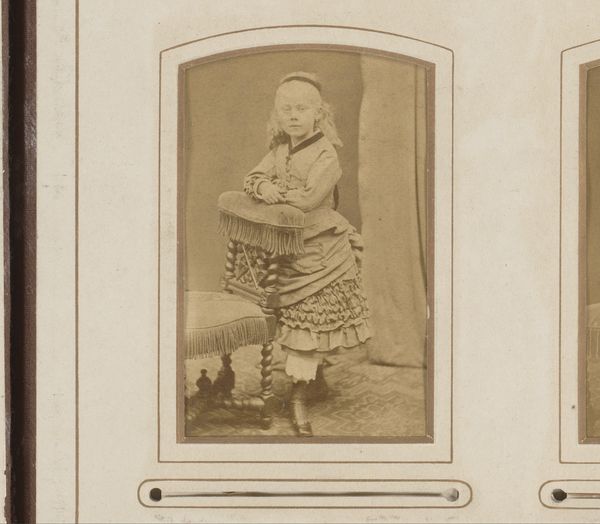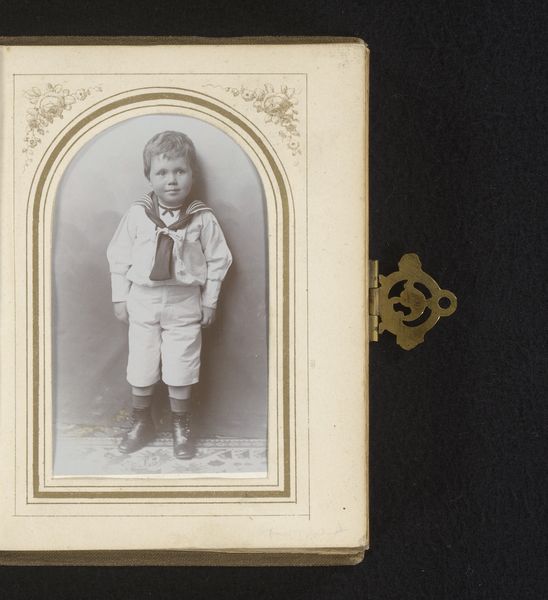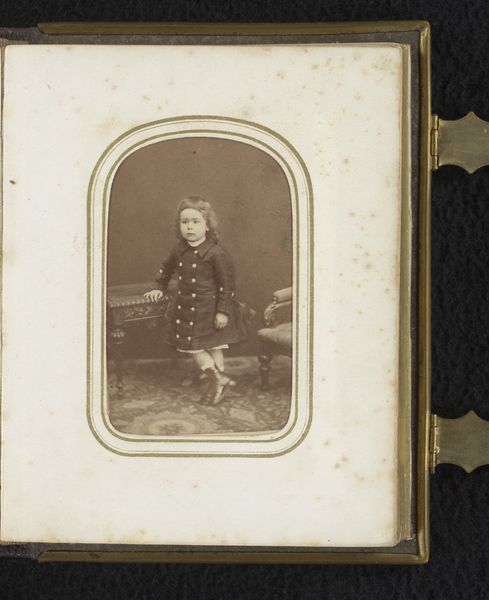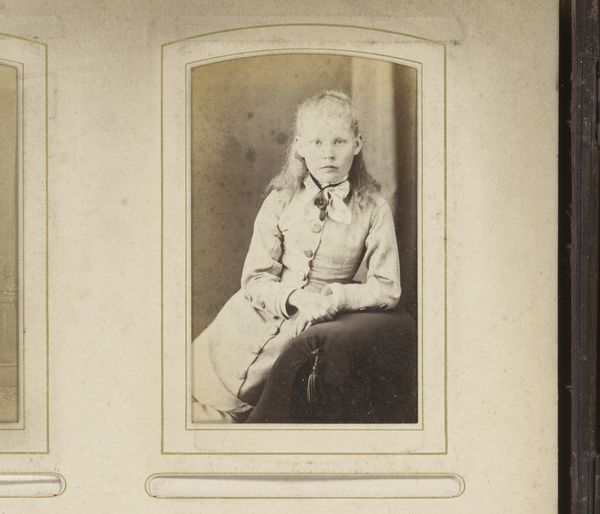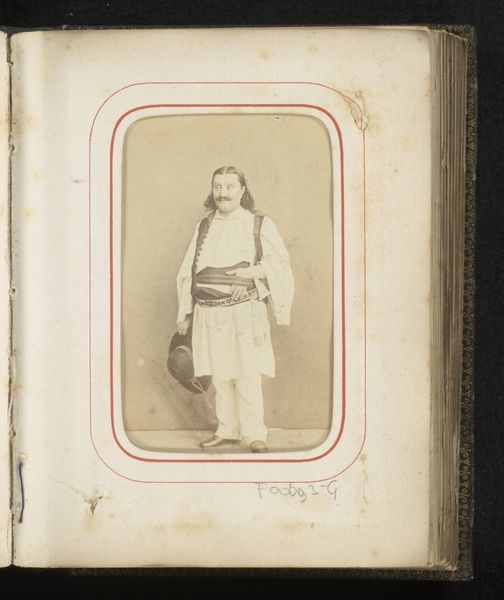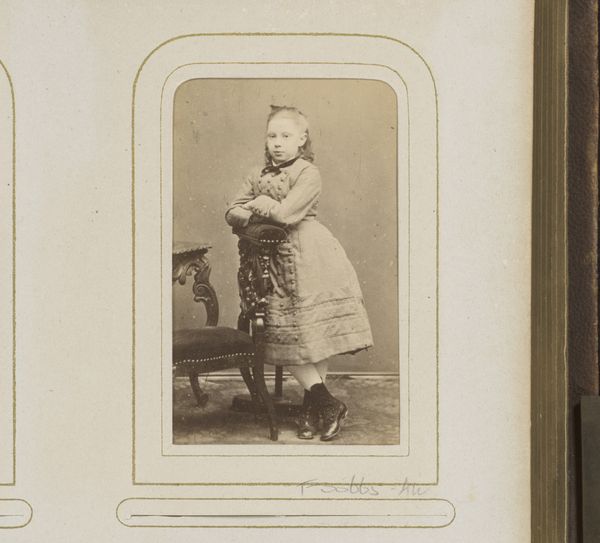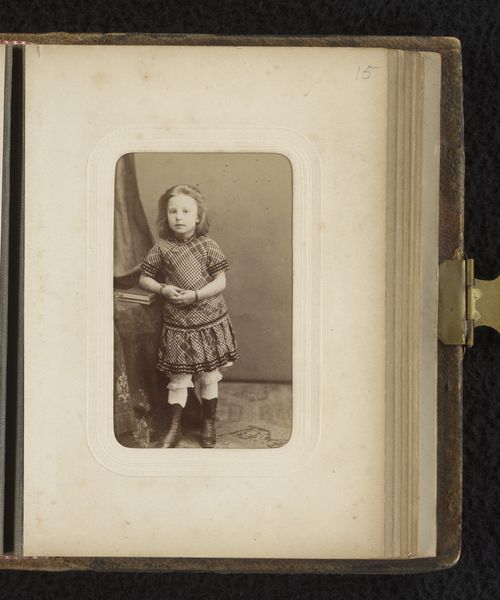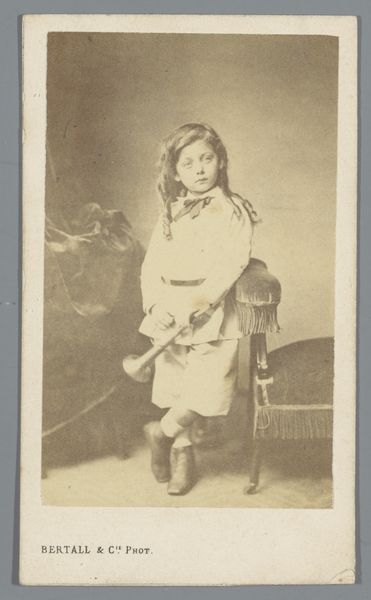
photography, gelatin-silver-print
#
portrait
#
figuration
#
photography
#
gelatin-silver-print
#
realism
Dimensions: height 85 mm, width 52 mm
Copyright: Rijks Museum: Open Domain
Editor: So, this gelatin-silver print from between 1870 and 1890 by F. Duschek shows a young boy in Romanian folk costume. I'm really struck by the details in the embroidery. What can you tell me about it? Curator: Considering its materiality, let’s focus on the labor and social context surrounding the creation of this photographic image and the clothing. What materials are visible? How might the production of the photograph, the garments, the hat contribute to our understanding of consumption during this time? Editor: I notice what looks like machine-made lace. The cape and the boy's boots look meticulously embroidered, maybe by hand, but maybe not. The photo itself is relatively accessible to the aspiring middle class, yet it portrays what I think would be a somewhat wealthy, or at least conspicuously presented, child. Curator: Exactly. Think about how the availability of gelatin-silver prints democratized image production and consumption compared to earlier, more expensive processes. However, access to photography does not mean full democratization. The clothing signifies more. Consider the cost and the skill necessary to produce that outfit. Who could afford that level of craft, and why might they commission a photograph showcasing it? Editor: So it's less about Romanian folk culture and more about how wealth is presented and consumed at this time? Is the 'folk' aspect just an exoticising trend among wealthy Europeans at this point, captured through the relatively 'new' technology of accessible photography? Curator: Precisely. The photograph serves as evidence of consumption, reflecting larger shifts in industrial production and the rise of consumer culture. The "folk" attire becomes a commodity, distancing it from its original context, yet also alluding to an imagined connection to the land and peasantry. Editor: That makes a lot of sense. It's easy to get lost in the image and forget to think about what went into creating and distributing it. Curator: Thinking about the social context in this case reframes our understanding of this photo and how to consider clothing as signifiers of material processes of the era.
Comments
No comments
Be the first to comment and join the conversation on the ultimate creative platform.

